eCommerce is slowly taking over traditional in-shop purchasing. Since the recent boom especially after 2020, eCommerce as a whole is looking to increase year after year.
There has never been a better time to introduce an eCommerce site for your brand or develop a brand-new business. Here we go into detail about everything you need to know on how to build an eCommerce store successfully.

Market Research for Your Niche
Before you consider testing products, creating landing pages, or figuring out a business plan, you’ll want to identify and perform market research on the niche you’d like to target. By doing this, you’ll have a much clearer vision of whether your idea will logically work or not.
Market analysis
The best place to start is market analysis. By doing this, you’ll discover the actual data behind your niche, how people are marketing within the industry, what products they’re selling, how well they’re doing, etc.
During the marketing analysis stage, you’ll want to spend a reasonable amount of time performing this. The more time you spend on this reduces the chances of failure, so don’t cut this process short.
Here are some questions you’ll want to answer with factual information when performing market analysis:
- Who are your competitors?
- What is your target market?
- Does this target market want what you’re selling and why?
- Is the pricing suitable for this target market?
- Is the market stable, new, or non-existing?
- What’s the best way to advertise to them?
Understanding the above and answering them with solidified data will undoubtedly provide you with a head start. To help you with this research, you may want to consider the below tools:
Define Your goals
After performing market analysis, your goal may have changed depending on your findings. Therefore, you’ll want to consider whether this niche is something you’re interested in or not. To determine this, ask yourself these questions:
- Do you care about the market you’ve performed analysis on?
- Can you see yourself working within this market for 5+ years?
- Do you have any pre-existing knowledge about this industry?
- Are the people you’re serving something you’re interested in?
If you positively answer the above, you can continue with this niche and almost start to build a new and exciting eCommerce website.
Domain and Webhosting
Before you begin building an eCommerce website, you may need to opt-in for a domain name and web hosting plan.
Please note, before you purchase these, ensure that your eCommerce CMS platform doesn’t include these in your membership. Because some eCommerce platforms offer bundled services that include domain registration and hosting as part of their package.
Below are some providers you’ll want to consider for hosting and domain services, as they are known for their reliability.
Choosing Your eCommerce CMS
Once you have a domain and web hosting provider in mind, you’ll want to choose what eCommerce CMS you’ll build your store with. In the world of CMS’s, you have two options: free and paid. Whichever you choose will highly depend on your budget, goals, and experience.
Free CMS’s
First, let’s discuss the best CMS’s in the market that are currently free. Before we mention these, you’ll want to remind yourself that free isn’t always better. Because they’re free, you’ll lack in customizability, accessibility, and performance. After all, they’re free, so there aren’t large amounts of money to fund the platform.
WooCommerce
WooCommerce is a plugin for WordPress users and powers 26% of the top one million websites. It’s a prevalent choice of CMS for most people starting their eCommerce journey. You’ll be granted access to 50,000+ paid and free plugins to improve your store, have complete control over the design of your website, and is relatively beginner-friendly. Including all of this, it’s scalable. With their subscriptions, you can upgrade as you grow, meaning you won’t be restricted with growth. WooCommerce’s core features are free, but the CMS offers paid add-ons for advanced features and customization options.
OpenCart
The most prominent free CMS you can select after WooCommerce is OpenCart. This is an open-source eCommerce platform specially designed for online businesses that want a website built by PHP programming language. Considering it’s free, it does have some impressive features, such as it supports 50+ payment gateways, can support multiple online stores, and it’s relatively easy to manage.
PrestaShop
Another free CMS you’ll want to be aware of is PrestaShop. The CMS is again an open-source eCommerce platform. It comes with a ton of built-in features and is used by 300,000+ different website owners. It’s entirely free, but you do have the option to download the software for a small fee and customize it however you like.
Paid CMS’s
Free CMS’s are a great place to start, but you’ll eventually want to migrate to paid platforms because they lack scalability. Personally, if you have the budget, you should be considering a paid CMS. They offer a whole range of features that can make your eCommerce site more accessible, unique, faster, and higher converting.
Shopify
Another lending platform within the industry is Shopify, and there’s sound reasoning behind it. Whether you’re an expert, intermediate, or beginner, Shopify is a perfect solution. You can either dive into code or used their pre-made themes and applications to achieve the design you want. Shopify made their platform to ensure that everyone can develop stunning web pages that convert, and they’ve done a remarkable job with this.
BigCommerce
This CMS platform has a slightly different approach than most mentioned on this list. BigCommerce is superb, but only for individuals that are somewhat established within the industry. It has everything you need and more, but the platform itself is primarily used by website owners who already receive a lot of traffic. However, it’s still an option you should consider as it may be more suited towards your goals and requirements.
Wix
A global brand that many people are familiar with is Wix. Wix was founded back in 2006, and since its release, over 180 million different users are subscribed to their platform. This is a tremendous amount, and I believe it’s due to their pricing system. When opting for a Wix account, you’re provided with various options ranging from start-ups to enterprises. Therefore, to begin your eCommerce journey, it’s incredibly affordable at around $4.5 a month.
Magento
If you’re already a well-established brand, then you may want to take a unique look at Magento. This CMS platform is used by various industry giants such as Nike, Ford, and Coca-Cola. Its producer is Adobe, who’s already built a well-deserved reputation for its applications. With Magento, you can expect intense levels of scalability, high customizability, and powerful built-in features, which are only included on other CMS’s as plugins.
HubSpot
Perhaps the other CMS platforms didn’t intrigue you. If that is the case, you could also consider HubSpot to build your eCommerce brand. HubSpot has many built-in features for both marketers and developers to ensure maximum amounts of customizability, scalability, accessibility, and customer experience. All in all, HubSpot is a prominent contender within the industry which may suit your requirements.
The above are some of the best free and paid CMS’s within the industry. Most of them have free trials. Therefore, if you want to test them before making the initial investment, this may be worth checking out. But remember, always pick a CMS based on your business’s goals. If you’re not going to scale within the first year or two, then you may want to purchase a cheaper CMS and migrate your website over to a more scalable one when you’re ready. If want to learn more about the above-mentioned eCommerce CMSs be sure to check our article on CMSs.
Features to Include on Your eCommerce Website
Choosing a suitable CMS to build your eCommerce store is essential. To better understand which features you may want them to include, you’ll want to become knowledgeable of the following. Here we detail all the vital attributes you’ll want on your eCommerce store to increase its chances of success.
#1 User-friendliness
First, the platform you opt-in for needs to provide user-friendliness. By offering this, you’re providing your customers a much better experience when they visit your store, increasing your conversion rates, and enhancing your SEO as on-page time improves. Here are some features you must include to ensure your eCommerce website is user friendly:
- Mobile optimization
- Page speed
- Easy navigation
- Simple checkout
- Not spammy
If you nail all of the above, you’re guaranteed already to do better than most eCommerce websites on the internet. We can’t stress the importance of mobile optimization. Currently, around 50% of all online transactions are performed on mobiles. It’s a massive chunk of potential customers you could be missing out on. Therefore, ensure your CMS automatically performs mobile optimization or provides you the tools to create a mobile-friendly website.
#2 High-quality content
User-friendliness is crucial, but the quality of the content is also. We understand that developing a new eCommerce store is exciting. However, rushing through the process and launching a non-professional website isn’t great for your brand’s image.
Therefore, be sure to include only high-quality content on your website. This doesn’t just include high-resolution images, but the copy, marketing materials, design, and much more. But don’t fall for the trap of not optimizing your images. High-quality photos can drastically decrease your website’s load speed, so ensure you don’t encounter this.
#3 User-generated reviews
Reviews are crucial to all businesses. They tell us what our customers are thinking, what we’re doing good, how we can improve, or what they think of our brand. Whatever they provide a review on, it’s vital data that cannot be bought.
However, you may increase the conversion rate by around 57% by putting user-generated reviews on your website. This is because 57% of consumers will only purchase from a business that showcases some reviews. Again, similar to mobile purchasing data, you’re just increasing your target audience of people who look out for these attributes.
#4 Special offers
Turn viewers into customers, and the best way to achieve this is by making them purchase impulsively. This marketing technique has been around since the beginning of selling. Provide special offers for first-time viewers through the banner of your website or via a newsletter. For example, setting up a code such as “first10” where a first-time buyer receives $10 off their order for a limited time. Adding “Limited time” onto the special offer releases the feeling of FOMO (fear of missing out) in the viewer’s brain. From this, the viewer feels much more inclined to purchase now rather than later.
#5 Wish lists
Wish lists, all websites have them, and they’re handy. A wish list is simply a tool that allows users to “save” products in a “list” to come back to later on. The reason they do this can vary. Maybe they haven’t got the funds now, are looking around to compare prices, or aren’t 100% sure they want to make the initial purchase yet. Whatever the reason, it helps the customer organize what products they may buy from you, which enhances usability.
#6 Related items
Including the above features, you may also want a CMS that offers a related items section. They can typically be found underneath product pages. As you can probably tell by the name, some products/items are also relatable to the current one they’re looking at.
This section can be utilized in two ways: you can use it to sell additional equipment for a particular item or upsell more goods to your customers. By implementing something like this, you’re guaranteed to increase the average order amount of each customer that converts on your website.
#7 Social proof
Create an emotional response by placing social proof on your home page, landing pages, product pages, checkout pages, etc. By providing a viewer a genuine emotional response, they start to trust your company much more.
Put this into perspective; if you had two duplicate product pages, but one had social proof, and the other didn’t, you’re much more likely to purchase from the website that had placed social proof on the page. Triggering small responses like this in eCommerce certainly goes a long way, and it’s something you should always consider when trying to maximize your conversion rate.
#8 Security features
As the world progresses, online transactions are becoming an integral part of our lives. But, because of the transaction process and the value of confidential data, there’s a window for cyber attacks. It’s less of a problem now than it was years ago, but you should still consider security features as a high priority. A few features you should include are below:
- SSL certificate – Most hosts provide you an SSL certificate nowadays, but you’ll want to guarantee yours does before making the initial investment. SSL certificates establish secure connectivity between the viewer and the website to ensure nothing is interfering in-between. It also shows on every website through the letters “HTTPS” or a green lock on the search bar.
- Two-factor authentication – If you’re going to allow customers to create customer accounts, you may want to have a two-factor authentication feature for added security. Sometimes a username and password aren’t good enough to fully secure customer details. By including this feature, customers will need to verify their login with a system-generated code sent by email or text message.
- Use a firewall – This feature provides a gateway (aka wall) between two networks (your website and the users) and blocks any malicious traffic or unauthorized networks from interfering.
- Privacy policies – To help your customer understand what security and privacy features you have on your website, you’ll want to mention them within your privacy policy. This will give them an added layer of confidence as they know how safe their information is.
#9 One-click payment options
Lastly, you may want a relatively new feature called one-click payment options. This option is allowed by various banks and payment gateways such as Amazon Pay, Google Pay, and PayPal. It will enable users to be redirected to the payment gateway, log in, and make the transaction without providing any payment details. By offering this, it makes purchasing much less seamless and enjoyable.
Building Your eCommerce Website (fast and easy)
After becoming knowledgeable on the above, you can start to develop a better understanding of what CMS you should use and the features needed to create a successful online store. But, how should you build your eCommerce site? Should you hire a developer or try to build it yourself? It’s a question every up-and-coming eCommerce owner needs to ask themselves. To help decipher, see the below:
Hiring a developer
If you have no skills, time, or patience to build a CMS store, you may be more interested in hiring a developer. However, there’s one thing that comes with hiring someone, and that’s money. According to Thumbtack, a web developers’ hourly rate can range from $25 to $85 per hour. For most beginning their eCommerce journey, that’s a substantial amount of money, considering it can take serval hours to develop a website. To summarize this, see the following pros and cons.
| Pros | Cons |
| You’ll have a website designed to your specific requirements | It costs a lot of money, and if you have a low budget, this shouldn’t be considered an option |
| If you’re inexperienced within the industry, you’ll get a much more professional website | You run the risk of hiring bad web developers |
| Because you’re not learning how to build a website, you can spend your time on something else (e.g., finding suppliers) | Choosing who will build your website will take time away from other critical eCommerce-related activities |
Building it yourself
Undoubtedly hiring a professional web developer is much easier than creating it yourself. However, building it yourself also comes with an array of benefits. These include the following:
| Pros | Cons |
| You’ll learn a new skill and will be able to modify and adjust your website yourself without any additional help | Because of the difficulty involved with developing good CMS websites, you may not achieve your desired outcome |
| It’s an inexpensive way of starting an eCommerce website | If you’re on a time scale, this process can be extremely stressful |
Whether you build your eCommerce website yourself or hire a developer, it comes down to several factors such as time, budget, knowledge, and willingness to learn. As a personal opinion, if eCommerce is your first business model, building your own website is much more valuable than hiring a developer. However, if you’re already a well-established brick-and-mortar store, then having a budget for a professional developer may be something you’d want to consider.
Launching Your eCommerce Platform
After deciding the above and having a final product ready to launch, you’ll want to ensure success. Nothing will be more heart-breaking than spending months on a website, only to launch something that isn’t working correctly, lacks engagement, or doesn’t result in any sales. It can trigger negative thoughts about your business, causing you to move away from this exciting opportunity. To ensure a better launch for your eCommerce brand, you’ll want to perform the below perfectly.
#1 Ensure your website is perfect
Guarantee that your website is perfect. Before launching, you’ll want to test all its functionalities. This includes all links, pop-ups, redirects, checkout, buttons, etc. Apart from testing these, you’ll also want to re-read your copy to ensure there aren’t any grammar errors. Only set your website live once you’re happy everything is up to scratch.
#2 Have clear call to actions (CTA)
Including the above, ensure that your call to actions (CTA) are clear. CTA is what causes the viewer to purchase goods. If they’re hidden or look merged into the background, you’ll want to make these more prominent on the web page. The best way to guarantee you have a clear CTA is by getting a friend or family member to have a look. Ask them to play around with your website and inquire whether or not they look impulsive enough.
#3 Solidify a marketing strategy
Apart from making sure your website is perfect, you’ll want to have a well-written marketing plan. It’s almost impossible to launch a website and start receiving sales. You need to drive traffic to your web pages, capture them, and turn the viewers into customers. Here are some online marketing strategies you can consider:
- Search engine optimization (SEO)
- Search advertising (PPC)
- Social media advertising (PPC, CPM, or free)
- Offline marketing (billboards, hosting events, etc.)
Study the above, see which looks the most appealing opportunity for your business model, and develop a strategy backed with budget, data, and goals.
Bonus: Marketing Your eCommerce Website
On the topic of marketing, we thought it’s best to elaborate. Marketing is the key to success with eCommerce stores, and without it, it’ll be challenging to see any progression. Here’s what you need to know about marketing your eCommerce website:
Optimize your website for SEO
Search engine optimization or SEO is a powerful marketing technique that overshadows all types of online marketing. Since the release of search engines, people have crafted optimized content to rank high for specific keywords. This allows you to gain highly targeted viewers for practically free. To optimize your content for SEO, you’ll want to target a particular keyword in the following:
- Within your copy
- Titles and headlines
- Meta titles and description
- Picture tags
Organically boost social following
Another free marketing technique is creating social media pages, which can be very lucrative if performed correctly. Here you have two options: themed pages or brand pages.
A themed page is something you see on Instagram, Pinterest, and Facebook that follows a specific “theme”. For instance, funny cat videos. Here you’ll post funny cat videos and organically wait for people interested in your page to follow you. By doing this, you can then promote your cat website that sells comic merchandise or accessories, etc. With themed pages, you’re limitless, as you can create multiple different ones and redirect them to the same website.
With branded pages, you’ll only have a page, and it’ll be solely dedicated to your brand. These convert higher because people follow the brand’s movement and already trust them. However, it’s much harder to gain followers because it’s unlikely you’ll spam post videos each day.
Alternatively, you could create a solidified plan to merge both of these together. For example, your themed pages promote your branded page, etc.
Create shareable content
The above marketing techniques are superb, but you need to create shareable content. Doing this will rapidly increase your following and SEO performance as people share your content (AKA promoting your business for free). Depending on your strategy, here is the content you should create:
- SEO – Infographics, videos, surveys
- Social media – Funny posts, quiz’s, polls
There’s an abundance of different shareable options you can opt-in for, but the above are some ideas.
Advertise on social or search platforms
The above free marketing techniques take a lot of time and effort to grow organically. If your budget allows, you could resort to paid advertising on social or search platforms. However, this depends on your expertise within the industry, budget, and time.
Advertising costs money, and failing to advertise correctly will result in you losing money. Therefore, you’ll need to decide whether or not you’ll want to include this in your marketing strategy. Alternatively, you could outsource this to someone else, but it isn’t cheap.
As you can see, there are various ways that you can successfully promote your online store. Depending on your goals, some might be more beneficial than others, but one is needed to ensure a successful online store. Driving traffic to your website is essential, but you’ll want to convert these viewers into customers. To achieve this, you’ll want to optimize your store for the highest conversion rate possible.
Bonus: Conversion Rate Optimization Tips for Your eCommerce Store
The higher the conversion rate, the more likely your store will be successful. A store that has 1,000 viewers a day doesn’t mean anything unless these people are making purchases. But a store with 100 viewers per day and a 10% conversion rate is much more valuable. Below are some tips on how to increase your conversion rate on your eCommerce store:
- Test everything – First, ensure your entire website is working. A faulty website can be alarming for anyone wanting to purchase goods: test links, CTA redirections, buttons, images, and anything else that has some functionality on your website before driving traffic.
- Optimize website speed – As the world of technology grows, more and more people are becoming less patient. Because of this, you must have a fast website. Nobody wants to wait around for a website to load, and most people leave unless the website loads in 3 or fewer seconds.
- Ensure mobile accessibly – Mobile devices are accountable for almost half of all web traffic. Because of this, ensure your eCommerce website is accessible on mobile and looks good.
- Develop better copy – Random words on a web page won’t increase the chances of a viewer converting into a customer. Therefore, create copy that’s compelling, exciting, and makes the viewer want to purchase from you.
- Simplify the checkout process – Have a simple checkout process, ensure you’re enrolled in gateways like Google Pay, Amazon Pay, and PayPal because they offer a one-click purchase feature for customers.
- Follow-up abandoned carts – Most, not all CMS platforms will have follow-up features. If not, try to install a recommended plugin. This sends email notifications to customers who nearly purchased.
- Have free shipping – Including the above, you need to offer free shipping. If you can’t, work shipping into your products costs. Nobody likes paying shipping, so don’t let your customers either.
The Sum Up
To summarise the above, you should have a solid idea of how to successfully plan the development of your eCommerce website from the preparation, building, and launching. Remember, creating an eCommerce site takes time, but it can be highly rewarding.
So, now you understand how to build an eCommerce website from scratch, what are you waiting for? Get planning!






